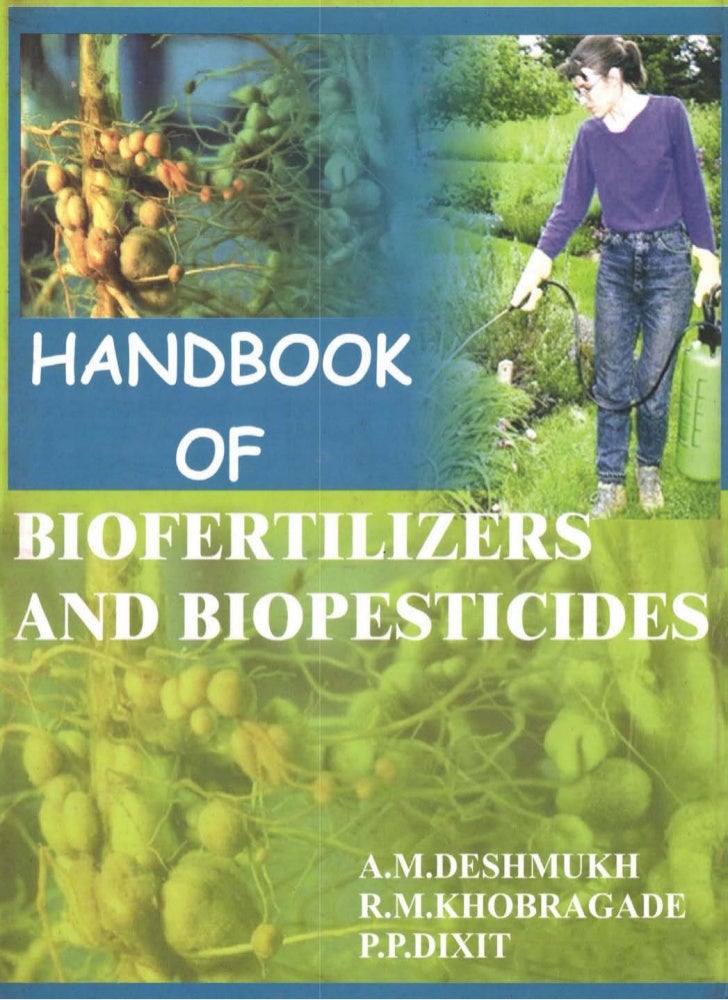
Role of bacterial biofertilizers in agriculture and forestry. These bacteria can be applied as biofertilizers in agriculture and forestry, enhancing crop yields. Microbial biofertilizers. Aug 14, 2015 - fixation; phytohormones; bacterial inoculants; plant stress resistance; nutrient solubilization. According to the Biofertilizer Manual, edited. Delivery of key microorganisms used as bio-fertilisers and bio-pesticides.
Biopesticides, a contraction of 'biological ', include several types of pest management intervention: through predatory, parasitic, or chemical relationships. The term has been associated historically with – and by implication – the manipulation of living organisms.
Regulatory positions can be influenced by public perceptions, thus: • in the EU, biopesticides have been defined as 'a form of pesticide based on micro-organisms or natural products'. • the US EPA states that they 'include naturally occurring substances that control pests (biochemical pesticides), microorganisms that control pests (microbial pesticides), and pesticidal substances produced by plants containing added genetic material (plant-incorporated protectants) or PIPs'. They are obtained from organisms including plants, bacteria and other microbes, fungi, nematodes, etc. They are often important components of (IPM) programmes, and have received much practical attention as substitutes to synthetic chemical plant protection products (PPPs). Contents • • • • • • • • Types [ ] Biopesticides can be classified into these classes- • pesticides which consist of bacteria, or viruses (and sometimes includes the metabolites that bacteria or fungi produce).
Entomopathogenic are also often classed as microbial pesticides, even though they are multi-cellular. Ex4 to mq4 decompiler software serials. • Bio-derived chemicals. Four groups are in commercial use:,,, and various are naturally occurring substances that control (or monitor in the case of ) pests and microbial diseases. • Plant-incorporated protectants (PIPs) have genetic material from other species incorporated into their genetic material ( i.e. Their use is controversial, especially in many European countries. • RNAi pesticides, some of which are topical and some of which are absorbed by the crop.

Biopesticides have usually no known function in photosynthesis, growth or other basic aspects of plant physiology. Instead, they are active against biological pests. Many chemical compounds have been identified that are produced by plants to so they are called. These materials are biodegradable and renewable alternatives, which can be economical for practical use. Systems embraces this approach to pest control. RNA [ ] is under study for possible use as a spray-on insecticide by multiple companies, including Monsanto, Syngenta, and Bayer.
Such sprays do not modify the genome of the target plant. The RNA could be modified to maintain its effectiveness as target species evolve tolerance to the original. RNA is a relatively fragile molecule that generally degrades within days or weeks of application. Monsanto estimated costs to be on the order of $5/acre. RNAi has been used to target weeds that tolerate Monsanto's herbicide. RNAi mixed with a silicone surfactant that let the RNA molecules enter air-exchange holes in the plant's surface that disrupted the gene for tolerance, affecting it long enough to let the herbicide work.
This strategy would allow the continued use of glyphosate-based herbicides, but would not per se assist a herbicide rotation strategy that relied on alternating Roundup with others. They can be made with enough precision to kill some insect species, while not harming others. Monsanto is also developing an RNA spray to kill One challenge is to make it linger on the plant for a week, even if it's raining. The Potato beetle has become resistant to more than 60 conventional insecticides. Monsanto lobbied the U.S.